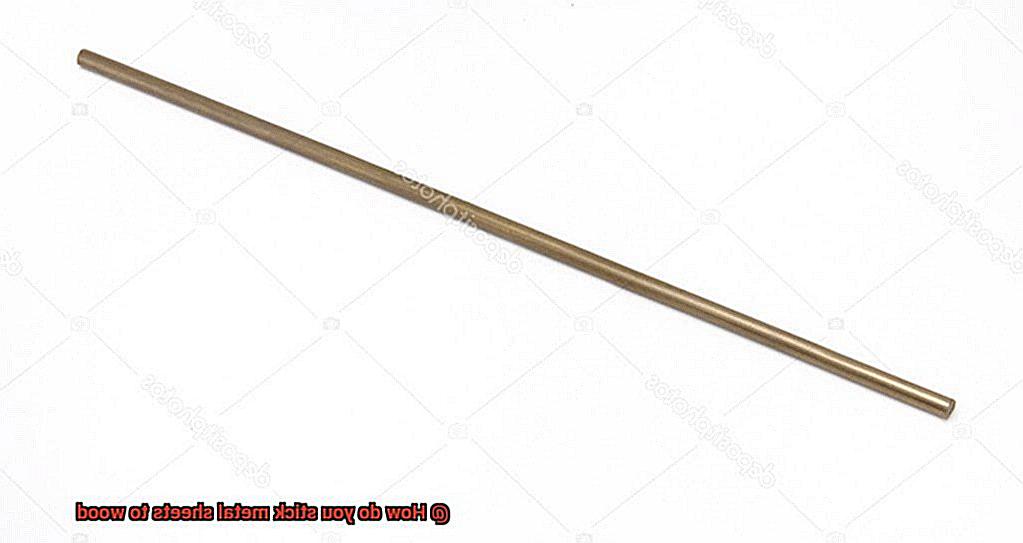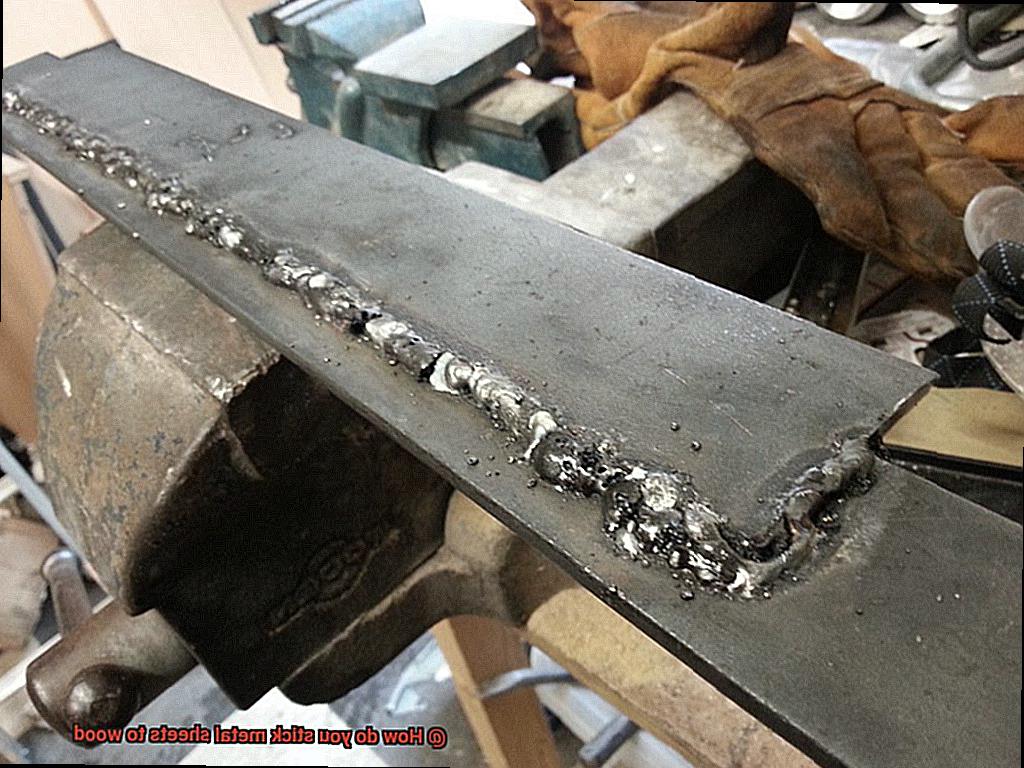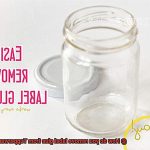If you’ve ever wondered how to attach metal sheets to wood, we’ve got your back. Don’t worry, it’s not as intimidating as it seems. In fact, we’re here to break it down for you with some awesome methods that will get the job done right. Whether you’re looking to add some pizzazz or strengthen your project, we’ve got all the tips and tricks you need.
Let’s start with the easy-peasy approach: adhesive bonding. This method is perfect for those who want a casual vibe without breaking a sweat. All you need are some adhesive products specifically designed for metal-to-wood bonding, like epoxy or construction adhesives.
Just slap ’em on and watch the magic happen. No fancy tools or woodworking skills required. It’s great for smaller projects or when time is of the essence.
But if you’re looking for a more professional and rock-solid attachment, mechanical fasteners are where it’s at. Nails, screws, or bolts will be your best friends in this case. With these bad boys, you can securely fasten that metal sheet to your wooden surface with ease.
This method is ideal for structural applications like building sheathing or flooring. It does require a bit of know-how and some basic tools like a drill or hammer.
Now here’s the deal: when choosing which method to use, think about what your project needs. If looks and simplicity are important, go with adhesive bonding. But if strength and durability are at the top of your list, mechanical fasteners are the way to go.
To sum it up, attaching metal sheets to wood can be done through adhesive bonding or mechanical fasteners – each with its own perks. Just remember to consider what your project requires and how skilled you are before making a decision.
With the right method, you’ll be able to create stunning masterpieces or sturdy structures that will stand the test of time. Keep an eye out for our upcoming blog posts where we dive deeper into application techniques and pro tips.
So, are you ready to get your metal sheets stuck to wood? Let’s do this.
Adhesive Method for Bonding Metal to Wood
Contents
- 1 Adhesive Method for Bonding Metal to Wood
- 2 Preparing the Metal and Wood Surfaces
- 3 Applying the Adhesive
- 4 Mechanical Fasteners for Attaching Metal Sheets to Wood
- 5 Pre-Drilling Holes in the Metal and Wood Surfaces
- 6 Using a Combination of Adhesive and Mechanical Fasteners
- 7 Factors to Consider When Deciding Which Method to Use
- 8 Conclusion
Look no further. In this comprehensive guide, we will delve into adhesive methods specifically designed for this purpose. Whether you’re a DIY enthusiast or a professional craftsman, understanding the factors involved in selecting the right adhesive is crucial for achieving a robust and durable bond. So, let’s dive right in.
Epoxy Adhesives:
When it comes to bonding metal to wood, epoxy adhesive reigns supreme. Renowned for its exceptional strength and durability, epoxy adhesives are the go-to choice for applications that demand a sturdy bond.
Not only can they withstand varying temperatures and humidity levels, but they also excel in both indoor and outdoor settings.
However, don’t forget the importance of surface preparation when working with epoxy adhesives. Cleanliness is key – thoroughly remove any contaminants. Moreover, roughening the surfaces with sandpaper or a wire brush will significantly enhance adhesion.
Polyurethane Adhesives:
Another fantastic option for bonding metal to wood is polyurethane adhesive. These adhesives offer a robust bond and flexibility, making them perfect for applications involving movement or vibration. They are also highly resistant to moisture, making them suitable for both interior and exterior use. Like epoxy adhesives, proper surface preparation is essential before applying polyurethane adhesives.
Specialized Adhesives:

In addition to epoxy and polyurethane adhesives, there are specialized adhesives available that are specifically formulated for bonding metal to wood. These adhesives often contain additives that enhance bonding properties and improve compatibility between the metal and wood surfaces.
Consideration Factors:
Choosing an adhesive method requires careful consideration of several factors:
- Load-bearing requirements: Select an adhesive that can withstand the expected load or stress. For heavy loads, consider using additional mechanical fasteners alongside the adhesive.
- Surface preparation: Thoroughly clean and roughen the surfaces to be bonded to ensure a strong and lasting bond.
- Application requirements: Consider the intended use and environment where the bond will be subjected. Some adhesives are better suited for indoor use, while others offer excellent resistance to moisture and can withstand outdoor conditions.
- Compatibility: Always test the adhesive bond in a small, inconspicuous area before applying it to the entire surface. This ensures compatibility between the adhesive and the specific metal and wood materials being used.
Preparing the Metal and Wood Surfaces
If you’ve ever tried joining metal sheets to wood, you understand the importance of achieving a strong and durable bond. That’s why meticulous preparation of the metal and wood surfaces is crucial for optimal results. Let’s delve into the intricate details of surface preparation and explore why it serves as the bedrock for success.
First and foremost, cleanliness reigns supreme. Before even contemplating the union of metal and wood, ensure that both surfaces are impeccably clean. Utilize a mild detergent or material-specific cleaner to eradicate any dirt, grease, or other contaminants that might impede the adhesive’s efficacy. Beware hidden residues that could sabotage your bond.
Once pristine cleanliness is achieved, it’s time to impart some texture. Gently roughen both the metal and wood surfaces through a process of sanding. This technique creates a roughened texture, which significantly amplifies the surface area available for adhesive adhesion. Acquire sandpaper with a medium grit, around 120-150, and meticulously sand away. Remember to honor the wood grain by sanding in its natural direction to prevent unnecessary harm.
Now that your surfaces boast a tantalizing roughness, let’s address those vexing oils often found on metal surfaces. Metal sheets frequently harbor oils or other substances that hinder proper adhesion. Vanquish these greasy culprits by employing a degreasing agent or rubbing alcohol. Vigorously wipe down the metal surface with a clean cloth doused in degreaser, and watch those oils dissipate like morning mist.
But wait, there’s more. Elevate your bond to new heights by applying a primer. Select a primer specifically formulated for both metal and wood surfaces and adhere religiously to the manufacturer’s instructions for application. Bestow a seamless coat of primer upon both surfaces, creating an additional layer of adhesion that ensures an unyielding bond.
Last but certainly not least, let’s confront the specter of rust. Should your metal sheets exhibit any signs of this corrosive menace, it’s imperative to address the issue before attempting to affix them to wood. Rust weakens the metal’s structural integrity and undermines the adhesive bond. Employ a rust converter or remover to combat these insidious rust spots. Ensure that the metal is unequivocally free of rust before proceeding.
Applying the Adhesive
The process of applying adhesive to stick metal sheets to wood requires careful preparation and attention to detail. To begin, it is essential to choose the right adhesive for the job. Consider options such as epoxy, construction adhesive, or polyurethane adhesive, each with its own unique properties.
Once you have selected the appropriate adhesive, it’s time to prepare the surfaces. Thoroughly clean both the metal sheet and wood surface, ensuring they are free from any dirt, dust, or grease. A solvent or degreaser can be used for this purpose. To create a better bonding surface, gently roughen the surfaces using sandpaper or a wire brush.
Now comes the exciting part – applying the adhesive. Using a brush or spatula, spread a thin and even layer of adhesive on both the metal sheet and wood surface. Be sure to cover the entire area where the metal sheet will be placed.
With the adhesive applied, carefully position the metal sheet onto the wood surface. Press down firmly to establish proper contact between the two materials. To prevent any movement during the curing process, use clamps or heavy objects to hold the metal sheet in place.
Patience is key at this stage. Allow sufficient time for the adhesive to cure according to the manufacturer’s instructions. Avoid disturbing or moving the bonded materials during this time for optimal results.
Once the adhesive has fully cured, inspect the bond thoroughly. If any gaps or weak spots are noticed, don’t worry – simply apply additional adhesive to reinforce those areas and ensure a strong and long-lasting bond.
Before the excess adhesive hardens, clean it up using a solvent or appropriate cleaning agent.
Mechanical Fasteners for Attaching Metal Sheets to Wood
When it comes to attaching metal sheets to wood, mechanical fasteners are the go-to solution. These fasteners offer a reliable and durable connection, ensuring that your metal sheet stays securely in place. In this article, we will explore the different types of mechanical fasteners available, their advantages, and disadvantages.
Screws:
Versatile and easy to use, screws are a popular choice for attaching metal sheets to wood. With options like wood screws, sheet metal screws, and self-tapping screws, you can find the perfect match for your project. Screws provide a strong grip on the metal sheet and can be easily driven into the wood. Self-tapping screws are especially useful for thin metal sheets as they create their own threads.
- Advantages: Versatile, strong grip, easy to use.
- Disadvantages: May require pre-drilling, potential for stripping if not properly installed.
Nails:
For lighter applications or when a discreet connection is desired, nails are a reliable option. Available in different lengths and gauges, nails offer flexibility for your project. Drive nails through both the metal sheet and into the wood for a strong and secure connection.
- Advantages: Easy to use, discreet connection.
- Disadvantages: May not provide as strong a grip as screws or other fasteners.
Rivets:
If you need excellent shear strength and vibration resistance, rivets are your best bet. Commonly used in construction, automotive, and aerospace industries, rivets consist of a cylindrical shaft with a head and a tail-end. They are inserted through pre-drilled holes in the metal sheet and wood, then deformed or “riveted” to create a secure connection.
- Advantages: High strength, vibration resistance.
- Disadvantages: Requires pre-drilling of holes, specialized tools may be needed.
Bolts and Nuts:
For larger or heavier metal sheets, bolts and nuts provide a strong and secure connection. Pre-drilling holes in both the metal sheet and wood is necessary, and the nut is tightened onto the bolt to create a tight connection. Bolts are suitable for applications where disassembly may be required.
- Advantages: Strong and secure connection, suitable for heavy-duty applications.
- Disadvantages: Requires pre-drilling of holes, may require additional tools for installation.
Pre-Drilling Holes in the Metal and Wood Surfaces
When attaching metal sheets to wood, pre-drilling holes in both surfaces is crucial for a strong and secure bond. This often overlooked step prevents wood splitting, facilitates easier insertion of fasteners into metal, and ensures a durable connection. In this article, we’ll explore the importance of pre-drilling, discuss the types of drill bits needed, delve into the correct drill speed, and touch upon an alternative method using glue.
Preventing Wood Splitting:
Wood can easily split or crack when fasteners are driven into it without a pilot hole. Pre-drilling a hole slightly smaller than the fastener’s diameter creates a pathway for smooth insertion without damaging the wood. This step preserves wood integrity and enhances overall strength.
Easier Insertion into Metal:
Driving fasteners directly into metal can be difficult and may damage the surface due to its hardness. Pre-drilling pilot holes in metal provides a guide for fasteners, making installation smoother and reducing the risk of damage.
Choosing the Right Drill Bits:
To pre-drill effectively, suitable drill bits are needed. Standard twist drill bits work well for wood, while specialized metal drill bits are necessary for drilling through metal. Choosing the correct type and size ensures clean, precise holes that accommodate your fasteners.
The Correct Drill Speed:
Drill speed is important when pre-drilling. A moderate speed is recommended for wood to prevent overheating or burning. For drilling through metal, a slower speed is preferred to prevent overheating and maintain cutting efficiency.

Alternative Method: Glue
Gluing can be an alternative method for securing metal sheets to wood. It eliminates the need for drilling holes, resulting in a cleaner appearance. However, glue alone may not provide the same strength as mechanical fasteners. Careful surface preparation and appropriate adhesives designed for bonding metal to wood are essential.
Using a Combination of Adhesive and Mechanical Fasteners
The combination of adhesive and mechanical fasteners provides a solution that can withstand heavy loads and various conditions. In this article, we will explore the advantages of using this method, providing examples of how it can be applied in construction, furniture making, and other applications. Let’s dive in and discover the key benefits of using a combination of adhesive and mechanical fasteners.
Advantages of Adhesives:
- Strong Bonding: Adhesives create a strong chemical bond between materials, distributing stress evenly across the joint. This ensures better load-bearing capacity and enhances overall strength.
- Versatility: Adhesives can bond different materials together, including metals, plastics, and woods. This versatility allows for a wide range of applications in various industries.
- Stress Distribution: Adhesives distribute stress over a larger area, reducing the likelihood of stress concentration points that could lead to failure. This helps to improve the overall durability of the joint.
Advantages of Mechanical Fasteners:
- Immediate Strength: Mechanical fasteners provide immediate strength and stability to the joint. They offer an initial hold while the adhesive cures, ensuring that the materials stay in place during the bonding process.
- Adjustable and Removable: Mechanical fasteners allow for adjustment and disassembly, making them suitable for applications that require flexibility or repairs. This is particularly useful in industries such as furniture making or automotive assembly.
- Redundancy: Using mechanical fasteners alongside adhesives adds redundancy to the joint. If one component fails, the other can still provide support and maintain the integrity of the structure.
Applications:
- Construction: The combination of adhesive and mechanical fasteners is commonly used in construction projects to secure materials such as wood, concrete, metal, or composite panels. This method ensures a strong and durable connection that can withstand various weather conditions and loads.
- Furniture Making: Adhesive and mechanical fasteners are often used together in the construction of furniture, ensuring sturdy joints that can withstand constant use and weight-bearing. This method is particularly useful for assembling cabinets, chairs, or tables.
- Automotive Industry: The automotive industry relies on the combination of adhesive and mechanical fasteners to secure various components, including body panels, interior trims, and structural reinforcements. This method ensures a strong bond that can withstand vibrations, impacts, and extreme temperatures.
Factors to Consider When Deciding Which Method to Use
When deciding which method and adhesive to use, there are several key factors to consider that will help ensure a successful bond.
First and foremost, it’s crucial to select the right adhesive type for your project. Epoxy, polyurethane, cyanoacrylate, and construction adhesive are common choices for bonding metal sheets to wood. Each adhesive has its own unique characteristics and properties, so take into account the specific requirements of your project and choose an adhesive that meets them.
Proper surface preparation is essential for a strong bond. Clean the metal sheet and wood surface thoroughly, removing any dirt, oil, or debris. Lightly sanding both surfaces will create a rough texture that enhances adhesion.
Consider the compatibility of the adhesive with both the metal and wood surfaces. Not all adhesives bond well with every type of metal or wood. Check the manufacturer’s guidelines or consult an expert to ensure compatibility before proceeding.
The strength requirements of your bond are another important consideration. If you need a strong and permanent bond, epoxy or construction adhesive may be suitable options. For temporary or removable bonds, consider weaker adhesives such as double-sided tape or pressure-sensitive adhesive.
Take into account the temperature and environmental conditions that your bonded materials will be exposed to. Some adhesives may not perform well under extreme temperatures or in humid environments. Choose an adhesive that can withstand the conditions it will encounter.
Time constraints are also a factor to consider. Some adhesives require longer curing times, while others provide quicker bonding. If time is critical for your project, select an adhesive with a fast curing time.
Lastly, don’t forget about safety precautions when working with adhesives. Follow the manufacturer’s recommendations, wear protective gear, and work in a well-ventilated area.
rZVscv9AxZo” >
Conclusion
In conclusion, there are two main methods for sticking metal sheets to wood: adhesive bonding and mechanical fasteners. Adhesive bonding is a simple and convenient approach, perfect for smaller projects or when time is of the essence. Epoxy and construction adhesives are commonly used in this method, providing a robust and long-lasting bond. However, don’t forget the importance of surface preparation – cleaning and roughening the surfaces is crucial for optimal adhesion.
On the other hand, if you’re looking for a more professional and secure attachment, mechanical fasteners like screws, nails, rivets, and bolts are your go-to option. This method is ideal for structural applications that demand strength and durability. Just remember to pre-drill holes in both the metal sheet and wood surface to prevent wood splitting and make inserting fasteners into metal a breeze.
When deciding which method to use, take into account factors such as load-bearing requirements, surface preparation, application needs, material compatibility, and desired strength and durability. And let’s not forget about time constraints – choose an adhesive with a suitable curing time if you’re working against the clock.
For ultimate strength and versatility, why not combine adhesive bonding with mechanical fasteners? This way, you’ll get immediate stability from the fasteners while allowing the adhesive to cure and create a powerful chemical bond.
Always prioritize safety when working with adhesives or tools – wear protective gear as necessary and work in a well-ventilated area. By selecting the right method based on your project’s requirements and executing the techniques discussed in this guide flawlessly, you’ll be able to stick metal sheets to wood successfully.






